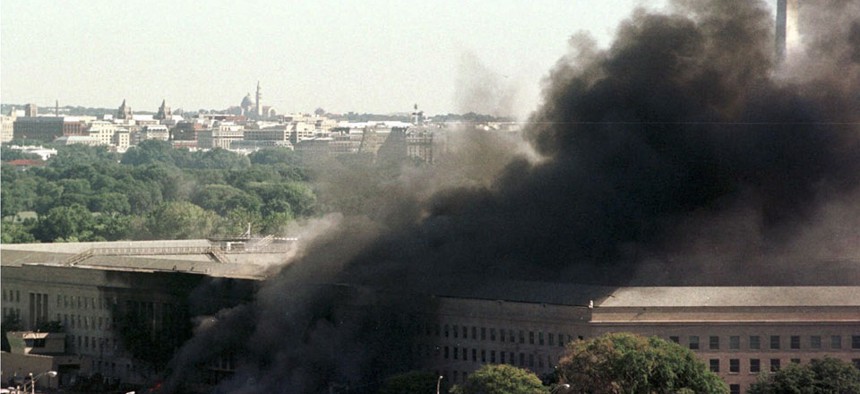Analysis: The U.S. Government Still Isn't Ready for a Catastrophic Terror Attack
If a major attack incapacitated the president, Congress, or Supreme Court, the nation would have no way to replace them -- despite 12 years of warnings.
I write this on the bright and sunny morning of September 11. Exactly 12 years ago, I was on my way to Dulles Airport. As I drove on the access road, convertible top down, I marveled at the beauty of the day. When I parked and went inside to get my boarding pass, the counter was abuzz with the news that, apparently, a small plane had wandered off course and hit the World Trade Center. I took the van across to the United terminal, and watched the news coverage for a bit while I waited to board my plane -- and saw the news that a second plane had hit the towers.
On the jet bridge, we were stopped and turned back -- air traffic had been frozen as it became clear that this was not some errant pilot but something bigger. I retrieved my car and drove home, and turned on the television and watched, transfixed and horrified.
By late afternoon, the news was that United Flight 93 had crashed in Pennsylvania and that brave passengers had thwarted hijackers from their terrorist mission. What made UA 93 different from the other flights that hit the Pentagon and the Twin Towers? It had left Newark, New Jersey, 45 minutes late, giving its passengers an opportunity to communicate with the outside world and learn that they were a part of a suicidal terrorist plot, not a standard hijacking.
United 93 had been scheduled to leave at the same time as the flight that devastated the Pentagon. If it had not been delayed, the odds are that it would have reached its destination, which, I calculated that day, would likely have been the symbol of American democracy, the Capitol of the United States. That beautiful morning, the House of Representatives was in a pro forma session, but the building and its environs were filled with members; in the pre-security era, people were gathered on the steps, lawmakers were holding press events outside on the lawn, and several committees were meeting inside. If a giant commercial airliner loaded with jet fuel had hit the cast-iron dome, the building would have collapsed, and a combination of molten metal, large chunks of marble, and burning fuel would have rained down on the people inside and out.
NEXT STORY: Taliban Attack U.S. Consulate in Afghanistan




